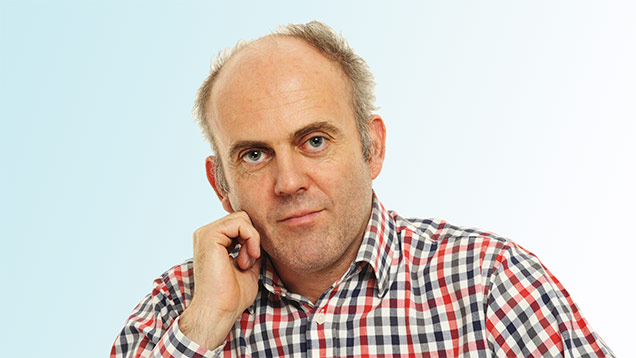Opinion: We can ‘show’ those Australians a thing or two

Tom Gubbins, who runs a herd of 1,400 Aberdeen Angus cows in Victoria, Australia, told delegates at the British Cattle Breeding Conference that it was time to “ditch livestock showing”.
It was not, he said at the recent Telford event, a proper way of assessing cattle – and while it might be typically blunt for an Australian to say such a thing, does he have a point?
From where I sit writing this, I can view a piece of lovingly polished silverware on my farm office mantelpiece won by my late father at the 1949 Hailsham Fat Stock & Dairy Show.
This single trophy is all he and I have to show in terms of prizes for a combined 90 years or so of cattle farming – and even that happened by accident.
What do you think about this topic? Have your say on our website forums
In the spring of 1949, one of Dad’s British Friesian heifers – Nora Springbourne 6th – escaped from a field where she was running with a number of her peers and a bull.
She then spent the entire summer living more or less wild on 150 acres of hill land on top of the South Downs. Dad kept an occasional eye on her using a powerful pair of binoculars that he had kept from his merchant seafaring days.
When he did eventually recapture her in the autumn, he found that Nora had blossomed into a beautiful, well-grown heifer. But she’d missed her romantic rendezvous with the bull and would now fall outside the calving pattern of the rest of the herd so Dad decided to sell her.
It was only when Nora arrived at the local dairy show a couple of weeks later that the auctioneer, rather than Dad, spotted Nora’s potential as a prize winner.
At the very last minute, Dad was persuaded to fork out the modest entry fee for the “Best dairy heifer in classes 16-20” competition, which Nora duly won.
Mr Gubbins’ complaints about the showing of British cattle are perfectly demonstrated by Nora’s triumph. He says that because “show” cattle are often kept separately to “commercial” cattle, they do not represent a reliable guide to how they will perform when exposed to a normal feeding regime.
What, he asks, is the point of recording the “performance” of show beasts in terms of weight gain when they are often ludicrously mollycoddled by being separately housed and fed on luxury feed?
What we need, according to Mr Gubbins, is a more scientific method where all cattle receive the same husbandry so that their relative performance can then be measured fairly against their peers – so-called estimated breeding values (EBVs).
Mr Gubbins does not mince his words, but let us hope that his strictures to UK cattle breeders fall on deaf ears.
He is the product of the meritocratic world of the Australian outback, where farms are the size of British counties and every conceivable measure of efficiency is of vital importance.
Farmers like him have to survive the extremes of the Australian climate, the vagaries of global agricultural commodity markets and currency volatility.
But in the UK we don’t have beef herds of 1,400 cows. Our average beef suckler herd boasts barely 30 cows, which, by definition, are likely to be managed by heroic amateurs supported by farm subsidies (something I suspect that Mr Gubbins also disapproves of).
I don’t, therefore, particularly cotton to Mr Gubbins’ oppressive demands that all my pedigree cattle be treated the same.
I may not have had much luck so far in acquiring cattle show silverware, but as I try to improve my 50 pedigree Sussex cows I need to dream of something more than an improved EBV.
Every cattle breeder needs a silver cup to polish from time to time.
Stephen Carr
Stephen farms an 800ha sheep, arable and beef farm on the South Downs near Eastbourne in partnership with his wife Fizz. Part of the farm is converted to organic status and subject to a High Level Stewardship Agreement.
